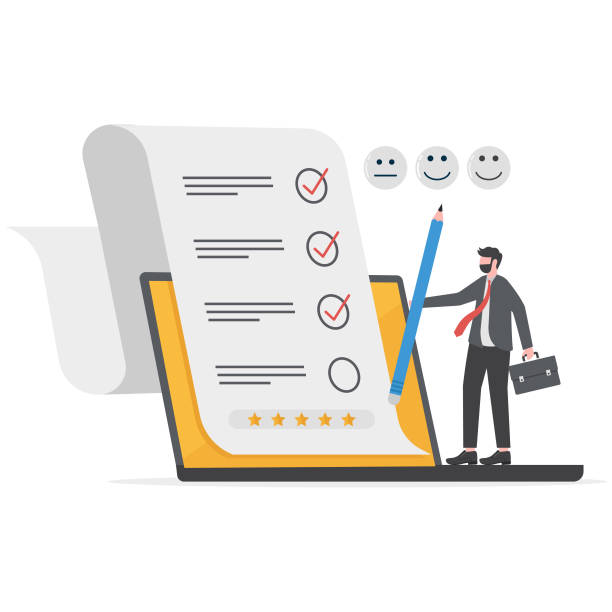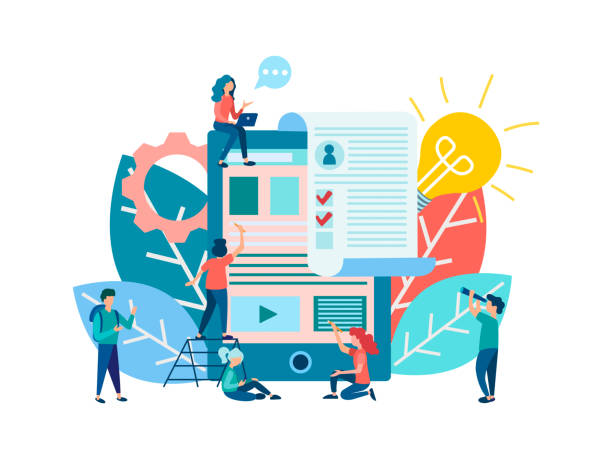Importance of Personal Website Design in the Digital Age
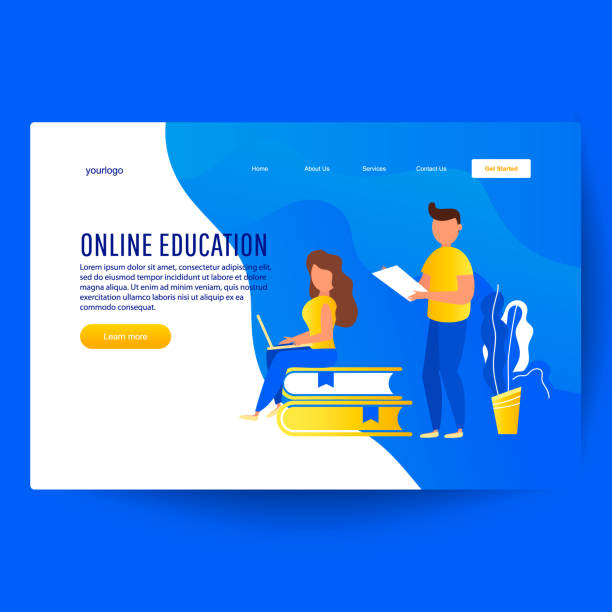
In today’s world, where physical boundaries have blurred and communication is predominantly digital, having a strong online identity has become more important than ever.
#Personal_Website_Design is no longer a luxury choice, but a vital tool for anyone looking to build a #personal_brand, showcase skills and experiences, and create a wider network of audiences.
This explanatory guide will help you gain a deeper understanding of the why and how of this process.
A personal website allows you to control your narrative and present a professional and trustworthy image of yourself.
In fact, it is your digital home where you can present your content without the limitations of other platforms.
Personal branding through a website provides a unique opportunity to stand out among competitors and build direct relationships with your audience.
This process not only helps you showcase your achievements but also provides a platform for sharing knowledge, thoughts, and even personal projects.
Designing a personal website allows you to continuously update your content and make necessary changes in line with your personal and professional growth.
Are you tired of your company’s website not meeting your expectations? With RasaWeb, design a professional website that truly represents your business.
✅ Increase attraction of new customers and sales leads
✅ Boost your brand’s credibility and trust with your audience
⚡ Get a free website design consultation!
Foundational Planning and Strategy for Launching a Personal Website
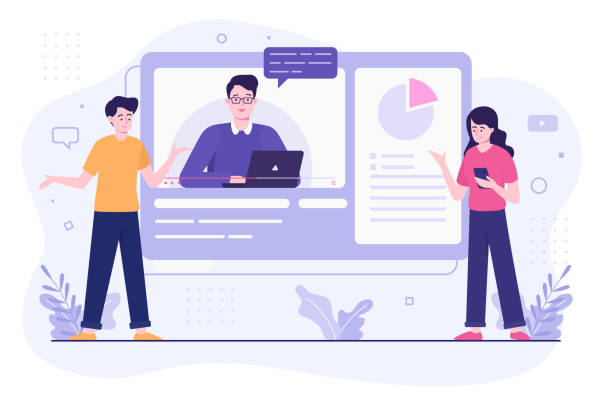
Before any practical steps for #creating_a_personal_website, precise planning and strategy definition are of utmost importance.
This guide helps you clearly define your goals and chart the path to achieve them.
First, you need to ask yourself: What is my goal for having a personal website? Do I intend to showcase my portfolio and resume? Do I want to have a specialized blog in a specific field? Or perhaps I’m looking to create a platform to sell my products or services? After defining the goal, it’s time to identify the target audience.
A thorough understanding of your audience helps you optimize your site’s content and design to be attractive and useful to them.
For example, if your audience is potential employers, the site should be professional and focus on your skills and experiences.
The next step is to determine the type of content and the overall structure of the site.
A personal website can include sections such as About Me, Portfolio, Blog, Contact, and Services.
The more precisely these steps are carried out, the easier the process of #personal_website_design will be, and the more effective the results.
Remember that a website with a strong strategy not only strengthens your online identity but also acts as a powerful tool in achieving your personal and professional goals.
Choosing the Right Platform and Infrastructure

Choosing the right platform for #creating_a_personal_website is one of the most crucial decisions in the initial stages.
This specialized section helps you get acquainted with the available options and make the best choice based on your needs and skill level.
Content Management Systems (CMS) like WordPress, Joomla, and Drupal are popular options that allow you to build and manage a website without extensive programming knowledge.
WordPress is often recommended for personal website design due to its high flexibility, numerous plugins, and large user community.
In addition to CMS, platforms like Squarespace or Wix also exist, which simplify the site-building process significantly by offering ready-made templates and a drag-and-drop interface.
After choosing the platform, it’s time to select a suitable domain name and host.
The domain name is your internet address (like yourname.com) and should be descriptive, short, and memorable.
Hosting is the space where your website’s files are stored on a server, making your website accessible to visitors.
Choosing a reliable and high-performance host is very important for your site’s speed and accessibility.
Various hosting companies offer diverse services, and you should choose one based on your budget and technical needs.
Some hosting companies also offer dedicated WordPress hosting services, which can be very useful for personal website design with WordPress.
At this stage, careful selection of infrastructure can have a direct impact on the performance and future of your website.
These initial decisions form the foundation of your website’s success.
| Feature | WordPress | Wix | Squarespace |
|---|---|---|---|
| Ease of Use | Medium (requires initial learning) | Very Easy (drag and drop) | Easy (professional templates) |
| Flexibility and Customization | Very High (plugins and coding) | Medium | High (limited to templates) |
| Cost | Domain and Hosting (self-hosted) | Free basic, paid plans | Paid plans (subscription-based) |
| SEO Capability | Very High (with plugins) | Good | Good |
| Support | Large community, documentation | Dedicated support | Dedicated support |
Producing Engaging and Useful Content

Content is king; this statement holds true in the web world, especially for #personal_website_development.
After preparing the infrastructure, the most important step is to produce content that is not only informative but also attracts and engages your audience.
This tutorial section teaches you how to produce effective content.
Your content should align with the site’s goal and your audience’s needs.
For a personal website, content can include the following:
-
About Me Page: An opportunity to introduce yourself, your story, skills, and goals.
This page should be sincere and transparent. -
Portfolio: If you work in creative or service fields, showcasing your best works is essential.
High-quality images, brief descriptions, and links to complete projects can be very effective. -
Blog: Creating a blog is for sharing knowledge, experiences, insights, and news related to your field.
Blog posts can be in the form of specialized articles, short posts, or even entertaining content.
Your blog articles can serve as a #guide for your audience and answer their questions. -
Services or Products: If you have services or products to offer, create separate pages for their introduction and details.
Visual content such as images and videos, also play an important role in the site’s attractiveness.
Ensure your content is regularly updated so the site remains live and dynamic.
Producing valuable content not only helps you demonstrate your expertise but also increases organic traffic to your site.
Ultimately, content quality and relevance to the audience are among the most important success factors in #personal_website_design.
Losing potential customers due to an unprofessional website? RasaWeb is your answer! With our specialized corporate website design services:
✅ Enhance your business’s credibility and standing
✅ Experience more targeted customer acquisition
⚡ Act now to get a free website design consultation!
Principles of Design and User Experience (UX)
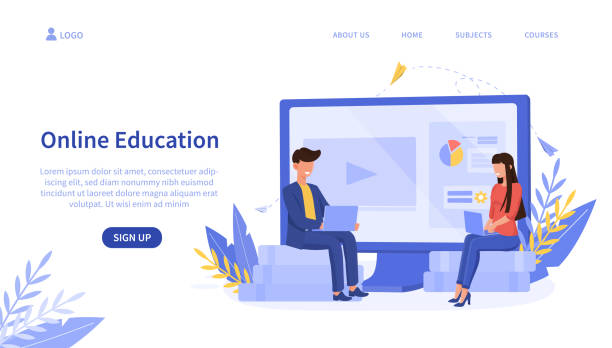
Your website’s appearance and ease of use are as important as its content.
#Personal_Website_Design is not limited to visual aesthetics; it also includes user experience (UX), which ensures visitors can easily navigate your site and access the information they need.
This section provides you with an analytical perspective.
Key design principles include:
-
Responsive Design: Your website must display correctly on all devices, from desktop computers to tablets and smartphones.
This is crucial for user experience and SEO. -
Simple and Intuitive Navigation: Website menus should be clear, logical, and easy to use.
Visitors should not get confused trying to find the information they need. -
High Loading Speed: Sites that load slowly lose visitors.
Optimizing images, using caching, and choosing suitable hosting can help improve speed. -
Attractive Visual Design: Using harmonious colors, fonts, and images that match your personal brand can make your website more appealing.
Simplicity and cleanliness in design are often more effective. -
Call-to-Action: Encourage visitors to perform a specific action (such as contacting you, downloading a resume, or signing up for a newsletter).
A website with good design and excellent user experience not only retains visitors but also encourages them to stay longer on your site and interact with your content.
This investment in design and UX will yield high returns in strengthening your personal brand and increasing your credibility.
SEO Fundamentals for a Personal Website
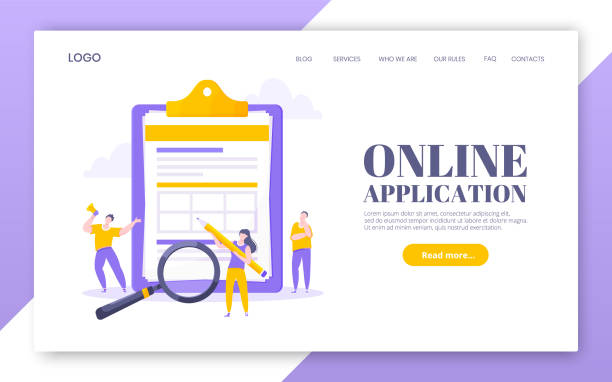
Having a beautiful website and great content is only half the battle; for people to find your website, you need to adhere to SEO principles.
This comprehensive guide covers the fundamentals of Search Engine Optimization (SEO) for a #personal_website.
SEO helps you achieve higher rankings in Google and other search engine results, attracting more organic traffic to your site.
Key SEO steps include:
-
Keyword Research: Identify the words your target audience searches for to find relevant content.
Naturally incorporate these words into your titles, headings, and main content text. -
On-Page Optimization: Involves optimizing internal elements of your website’s pages such as Meta Title, Meta Description, using Heading tags (H1, H2, H3), and optimizing images (Alt Text).
-
Site Speed: As mentioned earlier, site loading speed is very important for SEO.
Google dislikes slow websites. -
Responsiveness: Given the increased use of mobile devices, site responsiveness is a crucial ranking factor for SEO.
-
Internal and External Linking: Linking to other pages within your own site (internal links) and receiving links from other reputable websites (external links or Backlinks) helps improve your site’s authority.
Internal linking helps search engines better understand your site’s structure.
Understanding and applying these principles in the process of #launching_a_personal_website significantly increases your chances of being seen online.
SEO is an ongoing process and requires continuous updates and monitoring to achieve desired results.
Marketing and Promotion of a Personal Website

Building a great website is only half the story; you need to tell the world about it.
This informative section provides you with strategies for marketing and promoting your #personal_website to ensure your efforts are seen.
Effective methods for promoting your website:
-
Social Media Sharing: Regularly share new website content on social platforms relevant to your field (such as LinkedIn, Twitter, Instagram).
This can drive significant traffic to your site. -
Email Marketing: Start an email newsletter and invite visitors to sign up.
This allows you to communicate directly with your audience and keep them informed about new content or news related to yourself.
Email marketing is one of the most powerful tools for maintaining communication with your audience. -
Participation in Online Communities: Be active in forums, specialized groups, and Q&A websites where your target audience is present.
By providing useful and valuable answers, you can demonstrate your expertise and naturally share your website link. -
Collaboration with Others: Collaborate with individuals or other websites in your field.
This could involve writing guest posts for other blogs or conducting interviews that link back to your website. -
Use of Business Cards and Email Signatures: Include your website address on your business cards, resume, and email signature.
These traditional methods are still effective for personal website marketing.
By implementing a strong marketing strategy, you can expand your website’s reach and create new opportunities for yourself.
Remember that personal website design is just the beginning, and continuous marketing is crucial for its success.
| Tool/Platform | Main Use | Benefits |
|---|---|---|
| Social Networks (LinkedIn, Instagram, Twitter) | Content publication, audience interaction, branding | Wide reach, increased brand awareness, direct traffic |
| Mailchimp or Sendinblue | Email marketing, newsletters, email automation | Direct and personalized communication with audience, loyalty, increased visits |
| Google Analytics | Website traffic and user behavior analysis | Valuable insights for SEO and content improvement, goal tracking |
| Google Search Console | Monitoring SEO performance, indexing issues | Identify SEO errors, show site status in search |
| Guest Blogging Platforms | Writing articles for other sites | Increased domain authority, quality backlinks, exposure to new audiences |
Continuous Maintenance and Updates
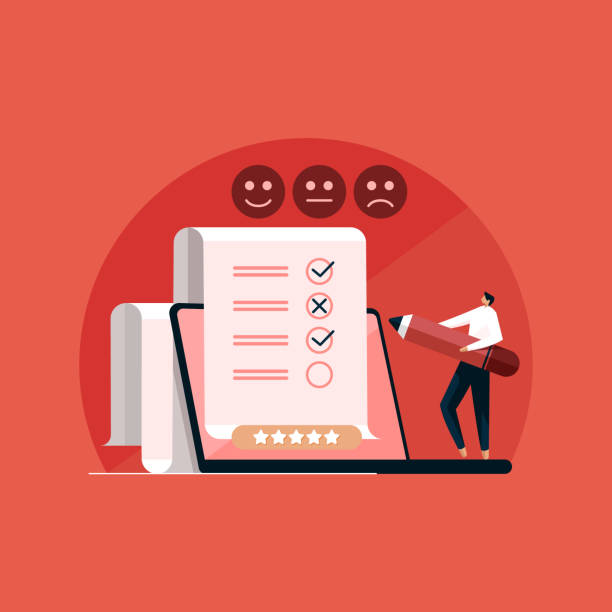
After #completing_a_personal_website and launching it, your work is not over.
Continuous maintenance and updates are essential for preserving optimal performance, security, and your website’s connection with its audience.
This explanatory section discusses the importance and methods of website maintenance.
The importance of maintenance includes:
-
Software Updates: If you use a CMS like WordPress, you must regularly update the WordPress core, plugins, and themes.
This not only helps improve performance but also protects your website against security vulnerabilities. -
Regular Backups: Always back up your website.
In case of any technical issues, hacking, or data loss, you can quickly restore your site.
This is a critical measure for your data’s security. -
Security Monitoring: Use security tools to protect your site against malware attacks and hackers.
An insecure website can quickly undermine your credibility. -
Database Optimization: Over time, your website’s database may become heavy and inefficient.
Regular database optimization can help improve site speed. -
Checking for Broken Links: Broken links not only diminish user experience but can also harm your site’s SEO.
Regularly check and fix your site’s links. -
Content Updates: Review and update old content.
Adding new information or correcting errors keeps your content fresh and relevant.
Designing a personal website is not a one-time project, but a continuous process of improvement and updating.
Investing time and resources in maintenance ensures the longevity and efficiency of your website.
Are you falling behind in the competition with large online stores?
RasaWeb, with professional e-commerce website design, brings your business online and increases your market share!
✅ Increase brand credibility and customer trust
✅ Easy shopping experience leads to more sales
⚡ Act now to get a free website design consultation!
Monetization and Advanced Features
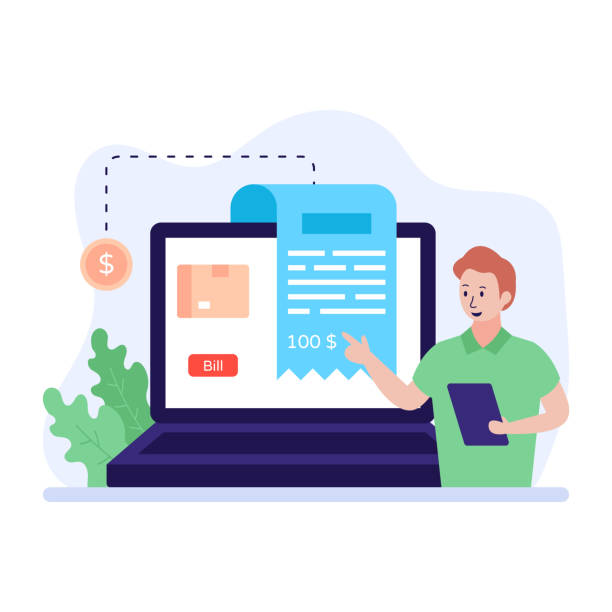
After establishing your personal website, you might consider ways to monetize it or add advanced features.
This section, with a thought-provoking approach, helps you discover the hidden potentials in #creating_a_personal_website.
Some monetization methods and advanced features:
-
Selling Digital or Physical Products: If you have products (such as e-books, online courses, artwork) to sell, you can add a small online store to your website.
This can be a direct source of income for you. -
Advertising: You can sell ad space on your website or use advertising networks like Google AdSense.
However, this method is usually economically justified for sites with high traffic. -
Affiliate Marketing: You can promote others’ products or services on your site and earn a commission for each sale or referral.
This method provides an opportunity to earn income without needing to produce products. -
Consulting or Coaching Services: If you are an expert in a field, you can use your website to offer online consulting or coaching services and manage consultation appointments.
-
Paid Membership: Offer some of your content (such as specialized articles, video tutorials) for a fee through a membership system.
-
Donation Button: If you provide valuable free content, you can ask your visitors to make a donation to support your work.
Adding these features to #personal_website_design can transform it from an online resume into an active and revenue-generating platform.
However, it is important that the added features align with the main goal of your site and your personal brand.
Future Trends and Continuous Growth
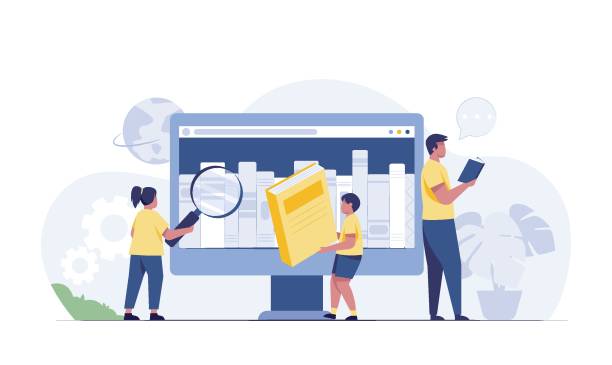
The web world is constantly changing, and for your #personal_website to remain relevant and effective, you must keep pace with new trends.
This section provides an analytical look at future trends and the importance of continuous growth in personal website design.
Some important future trends include:
-
Artificial Intelligence (AI) and Personalization: AI can help personalize the user experience on your website, such as delivering relevant content based on visitor behavior or improving chatbot responsiveness.
This is a fun yet practical opportunity for audience engagement. -
Voice Search: With the increasing use of voice assistants, optimizing content for voice search is becoming increasingly important.
This means using more natural language in content and directly answering questions. -
Augmented Reality (AR) and Virtual Reality (VR): Although not yet common for all personal websites, these technologies can offer new interactive and immersive experiences, especially for websites with visual portfolios.
-
Advanced Data Analytics: Deeper use of visitor data to better understand their behavior and continuously optimize the website.
Tools like Google Analytics are very useful in this regard. -
Advanced Cybersecurity: With increasing cyber threats, investing in security tools and adhering to best practices for protecting the website and user data will become more critical.
It’s important to view your personal website not just as a current project, but as a living and evolving entity.
By continuously following trends, learning new skills, and applying necessary updates, you can ensure your website remains effective and successful in the future.
This continuous approach to growth is one of the core principles in the digital world.
Frequently Asked Questions
| Number | Question | Answer |
|---|---|---|
| 1 | Why should we have a personal website? | A personal website allows you to professionally showcase your resume, portfolio, experiences, and views, strengthening your personal brand. This helps increase career and networking opportunities. |
| 2 | What content should we include on a personal website? | It usually includes sections like “About Me,” “Resume” (skills and experiences), “Portfolio” (projects and achievements), “Blog” (articles and insights), and “Contact Me.” The content should align with your website’s goal. |
| 3 | What is the best platform for building a personal website? | WordPress is a very popular option due to its high flexibility, numerous templates and plugins, and large user community. Platforms like Wix and Squarespace are also suitable for beginners. |
| 4 | What points should be considered when designing a personal website? | Responsive design (for correct display on mobile and tablet), high loading speed, a simple and attractive user interface (UI) and user experience (UX), and search engine optimization (SEO) are key points. |
| 5 | How to choose a suitable domain name for a personal website? | The domain name should ideally be simple, short, memorable, and relevant to your name or personal brand. Using common extensions like .com, .net, or .ir is recommended. |
| 6 | What is the importance of the Portfolio section on a personal website? | The portfolio section is the most powerful tool for showcasing your skills and completed projects. This section helps potential employers or clients tangibly see your abilities and have more trust in you. |
| 7 | Is adding a blog section to a personal website useful? | Yes, a blog allows you to share your expertise through articles and writings, interact with your audience, and improve your site’s ranking in search engines by producing fresh content. |
| 8 | How can a personal website be made to look professional? | Using a clean and modern design, a high-quality and professional profile picture, writing content without spelling or grammatical errors, and ensuring all links and forms function correctly significantly contribute to the website’s professionalism. |
| 9 | What does personal website maintenance and updates include? | Regular content updates, checking link and form functionality, regular backups (backup) of information, and updating the content management system (like WordPress) and plugins are essential for maintaining security and correct operation. |
| 10 | How much does it cost to design and maintain a personal website? | The cost can vary. It includes domain purchase (around $15-50 per year) and hosting (around $50-200 per year). Using free templates or paying for premium templates and plugins also affects the overall cost. |
And other services of RasaWeb advertising agency in the field of advertising
Smart Reportage: A creative platform for improving campaign management with custom programming.
Smart Marketing Automation: Revolutionize website traffic increase with the help of real data.
Smart Customer Journey Map: A creative platform for improving online growth by optimizing key pages.
Smart Sales Automation: An effective tool for online growth with the help of attractive UI design.
Smart Conversion Rate Optimization: A fast and efficient solution for increasing sales by focusing on optimizing key pages.
And over a hundred other services in the field of internet advertising, advertising consulting, and organizational solutions
Internet Advertising | Advertising Strategy | Advertorial
Resources
Personal Website Building Guide
What is Personal Branding?
Personal Development with a Personal Website
From Zero to Hundred: Personal Website Design
? RasaWeb Afarin, a specialist in digital marketing solutions, helps your business achieve its goals. We are your best companion for success in the digital world, offering WordPress website design, SEO optimization, social media management, and online advertising campaigns. Contact us today for a free consultation and to learn about our services!
📍 Tehran, Mirdamad Street, next to Bank Markazi, Southern Kazeroun Alley, Ramin Alley No. 6

